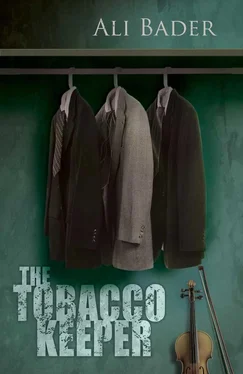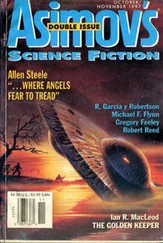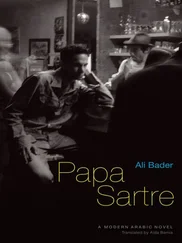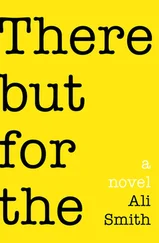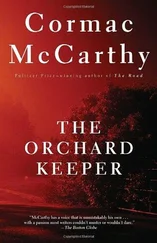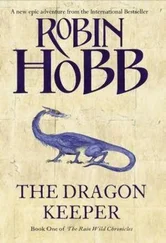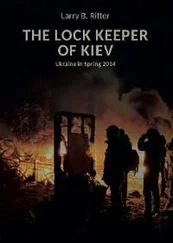After meeting with many people who’d known Haidar, Tahira, or Ismail al-Tabtabaei, we were sure that he’d married Tahira in Tehran. But when did he go back to Baghdad? Everybody confirmed that it was after the July 1958 revolution, when Abdel Karim Qasim took power in Iraq. But the date of his return remains uncertain. That he was exultant at the Iraqi revolution, which overthrew the king, was clear from a letter he’d sent Farida from Moscow during his trip there with Tahira and Hussein.
Nonetheless, several people categorically affirmed to us during our visit to Baghdad in 2006 that he’d been living in Al-Karradah neighbourhood immediately following the revolution. He’d lived in a beautiful brick house surrounded by a small garden near Saint Raphael church and opposite the nuns’ hospital that had been built in the sixties. It was a relatively old house, overlooking the Tigris from the back and Al-Karradah Street from the front. The street, which boasted numerous hotels, nightclubs, bars, bookshops, stores and markets, was fast becoming the most important commercial and cultural centre in Baghdad.
It is clear that during this period Haidar Salman went back to music with a passion. He actually became very famous, especially among the cultured elite, a class that established itself after the revolution. He gave concerts in venues that differed markedly from the halls where he’d performed in the past. His new audiences consisted mainly of middle-class communist families, a group that had supported the revolution and come to prominence during that era. This new class was also radically different from the aristocracy, which had been eradicated by the revolution. It wished to create its own cultural, political and social symbols and to present them as viable alternatives to the former aristocracy. As a result, an important association of artists, comprising sculptors, architects and musicians, was created in support of the revolution.
Accompanied by a large ensemble under the direction of Russian conductor Vladimir Glepov, Haidar Salman gave concerts not only in Baghdad but also in various world capitals, particularly Moscow and Prague. These two cities, which he absolutely loved, represented turning points in his life. It was there that he formed relationships with two musicians. One was Sergei Oistrakh who, together with Kakeh Hameh, accompanied him to the airport in Moscow. The other was Karl Baruch, the Czech composer who later escaped from Prague to New York. Both gave him enormous help in his difficulties, especially by facilitating his correspondence with Farida, for it was not possible for him at that time, or in fact at any other, to send a letter or even a piece of paper from Baghdad to Jerusalem. So he used to send his letters to these two foreign musicians, the Russian and the Czech, and they in turn would forward them to her address in Jerusalem.
A couple of important pieces of news were published in Baghdad’s papers. The first, published in Al-Jumhuriya in 1960, stated that the composer Haidar Salman had travelled to Moscow for one year to study conducting and composing at the Moscow Conservatory. The second appeared in Sawt al-Ahrar in 1961, stating that the leftist composer Haidar Salman had won the Queen of Belgium’s violin prize, and the Queen had handed out medals to the winners at a huge celebration.
This proves beyond doubt that Haidar Salman was living a totally new lifestyle during this period. His life was no longer as unsettled as it had been. Nor did he give himself up totally to dancing, partying or endless affairs with beautiful women as he had done in the past. His life had become highly focused and organized. He wrote a letter to Farida dated 1959 in which he mentioned that musical inspiration would often hit him suddenly while in the street, in his car or at the cinema. It would sometimes strike him during heated political discussions with friends and, when he went home, he would note down his ideas. In another more detailed letter, he once spoke of leaving the house one winter morning when it had been pouring with rain, and the silent, empty Nation Square was drenched. Baghdad was looking beautiful with the wet balustrades of its bridges and the sight of coats and umbrellas. When the Baghdad clock struck seven in the morning, he went back to his room, threw off his wet coat, sat by the fireplace and began to compose a piece of music. We naturally don’t know the genre of the piece that he composed, particularly because, starting from this period, Haidar Salman underwent a radical political and cultural transformation. Without a doubt, he must have experienced a profound shock, and his general outlook must have been deeply affected. In another letter to Farida, he expressed the feeling that the world around him had changed. It was though he was on an intense inner journey. Pure colours had been replaced by opaque counterparts. A new state of spiritual revelation had overtaken his whole being.
This letter brought to mind the elements of revelation and visionary insight that characterized the second personality of Tobacco Shop . I was personally astonished to see his new persona come to life. His complete identification with that character seemed to me almost ‘diabolical’, for it showed that he had discovered himself almost totally and completely. Through constant training and continued creativity, he was no longer playing a part but had become the new persona.
We also need to discuss the major changes that were happening to him.
It is well known that after the revolution, Haidar Salman began to visit Hekmat Aziz’s house on a regular basis. Hekmat was his revolutionary friend that he had got to know at the Khanzad restaurant in Tehran. He’d returned after the revolution and was living in a beautiful house shaded by tall trees in Al-Adhamiyah. Writers and musicians frequently visited him there. Jawad Salim, the famous sculptor, was often there together with his retinue, which in those days was made up of young artists of both genders, fans of his art, the poet Boland al-Haidari, Hussein Murdan, the dancer Afifa Eskandar, the artist Lorna Salim and several musicians including a few Russians who lived in Baghdad after the revolution and who taught music or painting at the musical academies or institutes of fine art. Some were Polish and had immigrated to Iraq during and after World War II. They would all meet at Hekmat Aziz’s house, sit near a small fireplace and revel in its seductive warmth. In a state of great euphoria, they would grill chops on this beautiful fire, one at a time. Hekmat’s wife, Widad, a Turkmen from the north of Iraq, would offer them glasses of cold beer which they would clink together merrily and noisily. They would eat and drink, totally absorbed in heated discussions and loud laughter. Those meetings generally ended with poetry readings, musical interludes or card games, of which Haidar became very fond.
But life didn’t always follow this exciting rhythm. The first year of the revolution was happy to some extent because a decisive victory had been achieved. But the euphoria of victory masked huge atrocities. Haidar Salman might have turned a blind eye to many violent scenes that accompanied the revolution, such as the murder of the young king, the army’s shooting of the princesses in the courtyard of Al-Rehab Palace and the lynching and murder of the prime minister. Were these violent scenes so different from the events of the Farhoud that befell the Jews in 1941 and left an indelible mark on the mind of the first character, the keeper of the flocks? Didn’t the masses also perpetrate those atrocities?
I can now draw connections between two basic themes. The first is the ongoing influence of his meeting with the Russian conductor who, without really knowing where the country of the young man before him was, advised him to find inspiration in his people. The second is his research into folklore, which started with the numerous comparisons he made between low and high, or classical, art. This was what the Muslim presenter had pointed out, although Haidar Salman was not sure at that time whether the man understood its full meaning and implications or not. And, of course, there was his visit to the Iranian Museum and the letter he wrote about the Shah’s portrait, painted by the Andy Warhol.
Читать дальше
